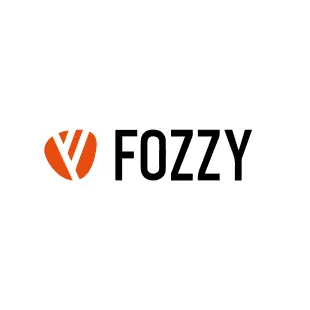However, it falls short for phenomena involving lower frequency vocabulary or less common language constructions, as well as in domains without vast amounts of data. In terms of real language understanding, many have begun to question these systems’ abilities to actually interpret meaning from language (Bender and Koller, 2020; Emerson, 2020b). Several studies have shown that neural networks with high performance on natural language inferencing tasks are actually exploiting spurious regularities in the data they are trained on rather than exhibiting understanding of the text. Once the data sets are corrected/expanded to include more representative language patterns, performance by these systems plummets (Glockner et al., 2018; Gururangan et al., 2018; McCoy et al., 2019). Semantic analysis analyzes the grammatical format of sentences, including the arrangement of words, phrases, and clauses, to determine relationships between independent terms in a specific context.
What are semantic analysis approaches in NLP?
Studying the combination of individual words
The most important task of semantic analysis is to get the proper meaning of the sentence. For example, analyze the sentence “Ram is great.” In this sentence, the speaker is talking either about Lord Ram or about a person whose name is Ram.
Homonymy refers to the case when words are written in the same way and sound alike but have different meanings. Hyponymy is the case when a relationship between two words, in which the meaning of one of the words includes the meaning of the other word. Relationship extraction involves first identifying various entities present in the sentence and then extracting the relationships between those entities. These two sentences mean the exact same thing and the use of the word is identical. Noun phrases are one or more words that contain a noun and maybe some descriptors, verbs or adverbs.
Search
However, a time attribute can contain a numeric, and a frequency attribute can contain an ordinal number. When InterSystems NLP identifies a marker term and determines which neighboring entities are affected by it, it then stores data about the attribute so that you can access it using one of the APIs in the %iKnow.Queries package listed previously. Notice that we’ve converted the embeddings to NumPy arrays — that’s because 🤗 Datasets requires this format when we try to index them with FAISS, which we’ll do next. By clicking “Post Your Answer”, you agree to our terms of service and acknowledge that you have read and understand our privacy policy and code of conduct. Artificial Intelligence Stack Exchange is a question and answer site for people interested in conceptual questions about life and challenges in a world where “cognitive” functions can be mimicked in purely digital environment.
To get a more comprehensive view of how semantic relatedness and granularity differences between predicates can inform inter-class relationships, consider the organizational-role cluster (Figure 1). This set involves classes that have something to do with employment, roles in an organization, or authority relationships. The representations for the classes in Figure 1 were quite brief and failed to make explicit some of the employment-related inter-class connections that were implicitly available. A second, non-hierarchical organization (Appendix C) groups together predicates that relate to the same semantic domain and defines, where applicable, the predicates’ relationships to one another. Predicates within a cluster frequently appear in classes together, or they may belong to related classes and exist along a continuum with one another, mirror each other within narrower domains, or exist as inverses of each other.
Machine translation
Note to preprocess the texts to remove stopwords, lower case, and lemmatize them before running Jaccard similarity to ensure that it uses only informative words in the calculation. If you use Dataiku, the attached example project significantly lowers the barrier to experiment with semantic search on your own use case, so leveraging semantic search is definitely worth considering for all of your NLP projects. “Investigating regular sense extensions based on intersective levin classes,” in 36th Annual Meeting of the Association for Computational Linguistics and 17th International Conference on Computational Linguistics, Volume 1 (Montreal, QC), 293–299. This representation follows the GL model by breaking down the transition into a process and several states that trace the phases of the event.
How AI Can Improve PLM – ENGINEERING.com
How AI Can Improve PLM.
Posted: Thu, 11 May 2023 07:00:00 GMT [source]
Dustin Coates is a Product Manager at Algolia, a hosted search engine and discovery platform for businesses. NLP and NLU tasks like tokenization, normalization, tagging, typo tolerance, and others can help make sure that searchers don’t need to be search experts. Much like with the use of NER for document tagging, automatic summarization can enrich documents. Summaries can be used to match documents to queries, or to provide a better display of the search results. A user searching for “how to make returns” might trigger the “help” intent, while “red shoes” might trigger the “product” intent.
So What exactly is Natural Language Processing?
Both polysemy and homonymy words have the same syntax or spelling but the main difference between them is that in polysemy, the meanings of the words are related but in homonymy, the meanings of the words are not related. It represents the relationship between a generic term and instances of that generic term. Here the generic term is known as hypernym and its instances are called hyponyms. In the above sentence, the speaker is talking either about Lord Ram or about a person whose name is Ram.
- Let’s create two helper functions for operations that we’ll repeatedly perform through this post.
- You can also check out my blog post about building neural networks with Keras where I train a neural network to perform sentiment analysis.
- The calculation is relatively straightforward using the inbuilt corr method in pandas as shown below.
- For example, we have three predicates that describe degrees of physical integration with implications for the permanence of the state.
- VerbNet is also somewhat similar to PropBank and Abstract Meaning Representations (AMRs).
- With the help of meaning representation, we can represent unambiguously, canonical forms at the lexical level.
VerbNet defines classes of verbs based on both their semantic and syntactic similarities, paying particular attention to shared diathesis alternations. For each class of verbs, VerbNet provides common semantic roles and typical syntactic patterns. For each syntactic pattern in a class, VerbNet defines a detailed semantic representation that traces the event participants from their initial states, through any changes and into their resulting states. We applied that model to VerbNet semantic representations, using a class’s semantic roles and a set of predicates defined across classes as components in each subevent. We will describe in detail the structure of these representations, the underlying theory that guides them, and the definition and use of the predicates. We will also evaluate the effectiveness of this resource for NLP by reviewing efforts to use the semantic representations in NLP tasks.
Data Topics
As we enter the era of ‘data explosion,’ it is vital for organizations to optimize this excess yet valuable data and derive valuable insights to drive their business goals. Semantic analysis allows organizations to interpret the meaning of the text and extract critical information from unstructured data. Semantic-enhanced machine learning tools are vital natural language processing components that boost decision-making and improve the overall customer experience. Precision is the fraction of retrieved tools that are indeed relevant, while recall is the fraction of relevant tools that are indeed retrieved [40]. Both precision and recall are therefore based on an understanding and measure of relevance in our results. In order to measure the precision and recall of the automated results, domain experts manually identified 76 tools that could answer, individually or as part of a computational pipeline, the specific clinical question.
Semantic analysis is the process of drawing meaning from text and it allows computers to understand and interpret sentences, paragraphs, or whole documents by analyzing their grammatical structure, and identifying relationships between individual words in a particular context. To summarize, natural metadialog.com language processing in combination with deep learning, is all about vectors that represent words, phrases, etc. and to some degree their meanings. Syntactic analysis (syntax) and semantic analysis (semantic) are the two primary techniques that lead to the understanding of natural language.
Common NLP Tasks & Techniques
Earlier, tools such as Google translate were suitable for word-to-word translations. However, with the advancement of natural language processing and deep learning, translator tools can determine a user’s intent and the meaning of input words, sentences, and context. In achieving the stated objectives, we introduce a semantic biomedical resource discovery framework based on NLP.
- This algorithm maps each unique word in the entire text corpus to a unique vector index.
- We have organized the predicate inventory into a series of taxonomies and clusters according to shared aspectual behavior and semantics.
- Much like with the use of NER for document tagging, automatic summarization can enrich documents.
- The very first reason is that with the help of meaning representation the linking of linguistic elements to the non-linguistic elements can be done.
- Natural Language Processing (NLP) allows machines to break down and interpret human language.
- Most information about the industry is published in press releases, news stories, and the like, and very little of this information is encoded in a highly structured way.
You often only have to type a few letters of a word, and the texting app will suggest the correct one for you. And the more you text, the more accurate it becomes, often recognizing commonly used words and names faster than you can type them. 4For a sense of scale the English language has almost 200,000 words and Chinese has almost 500,000. Please read the below post to learn how to deploy a text-image multimodal search engine in production.
Sentiment
Natural language processing (NLP) is the ability of a computer program to understand human language as it is spoken and written — referred to as natural language. SaaS solutions like MonkeyLearn offer ready-to-use NLP templates for analyzing specific data types. In this tutorial, below, we’ll take you through how to perform sentiment analysis combined with keyword extraction, using our customized template. Natural Language Generation (NLG) is a subfield of NLP designed to build computer systems or applications that can automatically produce all kinds of texts in natural language by using a semantic representation as input. Other interesting applications of NLP revolve around customer service automation.

The approach helps deliver optimized and suitable content to the users, thereby boosting traffic and improving result relevance. SS implemented the tools and metadata repositories, LK implemented the concept recognizer mechanism, PS implemented the interpreter, GI implemented the web based front-end. LK, GZ and PS conducted the integration of the framework which GZ is also the administrator of the server.
$readingListToggle.attr(“data-original-title”, tooltipMessage);
The first part of semantic analysis, studying the meaning of individual words is called lexical semantics. It includes words, sub-words, affixes (sub-units), compound words and phrases also. In other words, we can say that lexical semantics is the relationship between lexical items, meaning of sentences and syntax of sentence.

For some classes, such as the Put-9.1 class, the verbs are semantically quite coherent (e.g., put, place, situate) and the semantic representation is correspondingly precise 7. Natural language processing (NLP) and Semantic Web technologies are both Semantic Technologies, but with different and complementary roles in data management. In fact, the combination of NLP and Semantic Web technologies enables enterprises to combine structured and unstructured data in ways that are simply not practical using traditional tools. Polysemy refers to a relationship between the meanings of words or phrases, although slightly different, and shares a common core meaning under elements of semantic analysis. By knowing the structure of sentences, we can start trying to understand the meaning of sentences.
What is syntax and semantics in NLP?
Syntax is the grammatical structure of the text, whereas semantics is the meaning being conveyed.
Understanding human language is considered a difficult task due to its complexity. For example, there are an infinite number of different ways to arrange words in a sentence. Also, words can have several meanings and contextual information is necessary to correctly interpret sentences. Just take a look at the following newspaper headline “The Pope’s baby steps on gays.” This sentence clearly has two very different interpretations, which is a pretty good example of the challenges in natural language processing.

What is semantic approach?
Semantic approach to knowledge representation and processing implicitly define the meaning of represented knowledge using semantic contexts and background knowledge.
